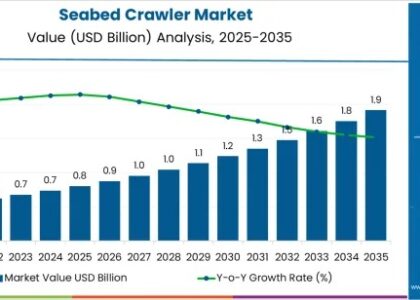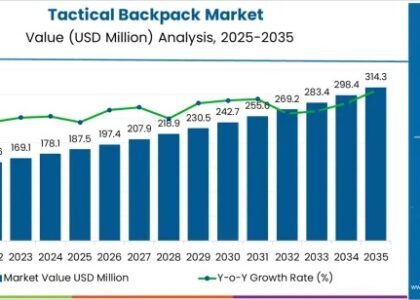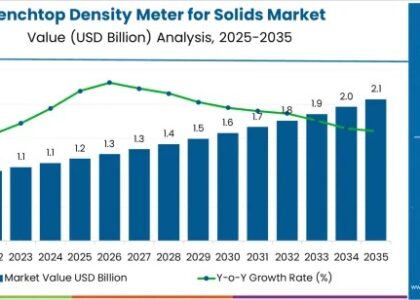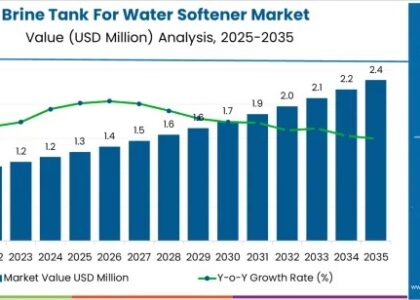The radar market is projected to attain USD 42.1 billion in 2025 and grow significantly to USD 85.6 billion by 2035, with a CAGR of 7.8% during the forecast period. Some of these developments include ongoing innovations in solid-state radar, synthetic aperture radar (SAR), and multifunctional phased array radar.
Radar technology is no longer confined to defense and aviation—it has become a foundational sensing system across a wide range of applications including automotive, maritime, weather forecasting, industrial automation, and space exploration. The radar market is evolving rapidly, driven by the demand for real-time data, situational awareness, and all-weather capabilities in both civilian and military sectors.
As industries embrace automation, safety, and intelligent monitoring, radar systems are emerging as key enablers of accurate detection, distance measurement, and environmental mapping.
Get Ahead with Our Report: Request Your Sample Now!
Core to Detection and Tracking
Radar, which stands for radio detection and ranging, operates by transmitting radio waves and analyzing their reflection off objects to determine position, speed, and movement. Its ability to function reliably in diverse conditions—day or night, rain or fog—makes it indispensable for applications requiring continuous, real-time monitoring.
Modern radar systems offer high precision, long-range capabilities, and minimal latency, making them ideal for tracking everything from aircraft and ships to vehicles, drones, and atmospheric systems.
Automotive Sector Accelerates Adoption
One of the most transformative shifts in the radar market is taking place in the automotive industry. Advanced Driver Assistance Systems (ADAS) and autonomous vehicles rely heavily on radar sensors for adaptive cruise control, collision avoidance, lane change assistance, and blind-spot detection.
Unlike cameras or LIDAR, radar sensors are resilient in low-visibility conditions, providing an essential layer of redundancy and safety. Automakers are integrating radar into front, rear, and side-facing positions, forming a 360-degree safety shield around the vehicle.
Defense and Aerospace Maintain Strategic Demand
Radar continues to play a critical role in national defense and aerospace operations. From early warning systems and target tracking to missile guidance and airspace surveillance, radar technologies are vital for strategic situational awareness.
Modern defense radar systems are increasingly multifunctional, capable of detecting and classifying a wide range of aerial, naval, and ground-based threats. With the rise of stealth technology and hypersonic weapons, radar innovation is focused on improving sensitivity, processing speed, and electronic counter-countermeasures.
Exhaustive Market Report: A Complete Study
Weather Monitoring and Disaster Response
Meteorological agencies rely on radar to monitor precipitation, storm patterns, and severe weather events. Doppler radar systems can track the movement and intensity of rain, hail, and wind patterns with high accuracy, aiding in early warning and disaster management efforts.
As climate-related events become more frequent and intense, demand is growing for next-generation weather radar systems that offer greater resolution, faster scanning, and integration with forecasting models.
Industrial and Security Applications Expand Reach
Beyond traditional sectors, radar is gaining traction in industrial automation, perimeter security, and infrastructure monitoring. In manufacturing and logistics, radar sensors are used for object detection, motion sensing, and speed measurement in harsh environments where optical systems may fail.
Security and surveillance systems are incorporating radar to detect intrusions, monitor restricted zones, and complement video-based analytics. These applications benefit from radar’s ability to function in low-light or obscured environments, adding a reliable layer of security.
Miniaturization and Integration with IoT
Technological advancements are leading to the miniaturization of radar modules, enabling integration into smaller platforms such as drones, wearable devices, and consumer electronics. Low-power, short-range radar is being used in gesture recognition, occupancy sensing, and smart home applications.
As part of the broader Internet of Things (IoT) ecosystem, radar sensors can connect to cloud-based analytics platforms, enabling remote monitoring and intelligent decision-making in real time.
Challenges in Spectrum Allocation and Cost
Despite its benefits, the radar market faces challenges such as limited radio frequency spectrum, interference management, and system complexity. As more applications compete for bandwidth, efficient spectrum usage and interference mitigation become critical.
Cost and integration complexity also remain barriers in some segments. However, advances in chip design, digital signal processing, and software-defined radar systems are helping to make radar more affordable and adaptable.
Future Trends: AI, Imaging Radar, and Multimodal Fusion
Looking ahead, radar systems are becoming more intelligent and capable through the integration of artificial intelligence and machine learning. AI-powered radar can identify patterns, reduce false positives, and adapt to changing environments.
Imaging radar is emerging as a high-resolution alternative for detailed object classification, particularly in autonomous driving and surveillance. Meanwhile, fusion of radar with other sensors such as cameras, LIDAR, and ultrasonic systems is creating comprehensive perception platforms for advanced applications.
Enhancing Precision in a Connected World
In a world where data and awareness are critical, radar is enabling safer transportation, smarter cities, stronger defense systems, and more efficient industrial operations. It offers unmatched reliability and adaptability in sensing and detection, making it a core technology for the future.
As industries continue to pursue automation, autonomy, and real-time decision-making, the radar market will remain at the forefront—powering precision, resilience, and innovation across every domain.
Drive Your Business Growth Strategy: Checkout the Report for Key Insights!
About Future Market Insights (FMI)
Future Market Insights, Inc. (ESOMAR certified, recipient of the Stevie Award, and a member of the Greater New York Chamber of Commerce) offers profound insights into the driving factors that are boosting demand in the market. FMI stands as the leading global provider of market intelligence, advisory services, consulting, and events for the Packaging, Food and Beverage, Consumer Technology, Healthcare, Industrial, and Chemicals markets. With a vast team of 400 analysts worldwide, FMI provides global, regional, and local expertise on diverse domains and industry trends across more than 110 countries.
Contact Us:
Future Market Insights Inc.
Christiana Corporate, 200 Continental Drive,
Suite 401, Newark, Delaware – 19713, USA
T: +1-845-579-5705
For Sales Enquiries: sales@futuremarketinsights.com
Website: https://www.futuremarketinsights.com
LinkedIn| Twitter| Blogs | YouTube






